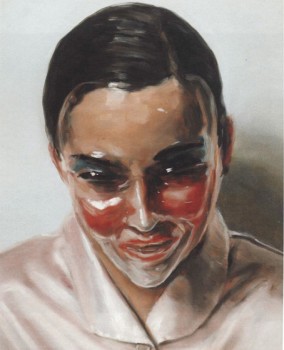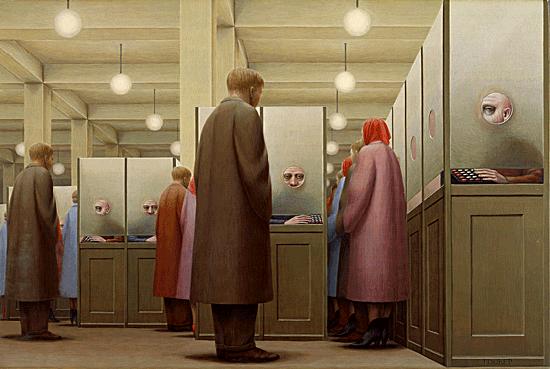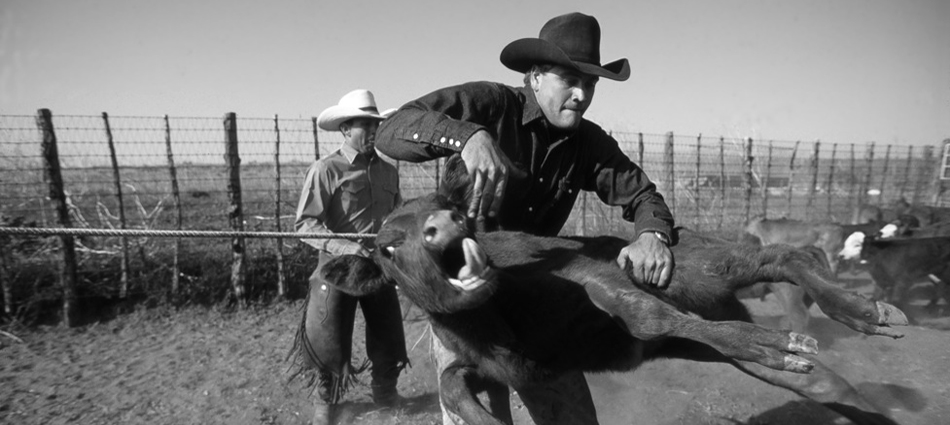My thoughts on "Conversation" by Zeldin
36 Topics
Of the thirty-six topics of conversation, number six (The wasted meaning: How can shy people can be helped to talk?) resonated with me because I am shy and introverted. I have things to say, I often have something to say, which is very frustrating when you're afraid to talk. It doesn't help that when I'm nervous, I tend to not say the words as my brain intended and I don't make sense. People who don't know me very well and have seen this happen in a conversation with me usually find me uninteresting and don't like to converse with me. And there are some, depending on the circumstance, think I'm an idiot because of this. Suffice it to say, finding out about those people is merely counteractive.
However, I found Zeldin's words insightful and hopeful when he said, "throughout history, ordinary people have suddenly come out with the most amazing statements when they find the courage"(16).
Chapter 1
"We know enormous amounts of how relationships go wrong. It is much harder to show how they go right, without arrogance or without naivete or the fear that once love is analyzed, it will lose its magic." I've been married for eight years now and have been frequently asked by women about my age how I could have gotten married so young (twenty) and knew that it was right, especially with a short engagement. Like any other couple, we have our ups and downs and disagreements (mostly about parenting) but I find their questions so difficult to answer. For some it works and for some it doesn't. The doesn't makes more sense and is easier to explain away (fighting, arrogance, pride, finances, little/no conversation or conversation that hurtful and antagonizing, etc.).
Something clicked when my husband and I met. It wasn't fireworks or a spiritual earthquake, we were just on the same page, the same wavelength. We had a lot of the same goals and interests but most importantly (and we've had this conversation before) we have so much to talk about all the time. We love to go on long drives, not just to get out and see sights and scenery but to talk. It's a wonderful environment where we can talk about anything and go a long ways before we're interrupted by getting gas or going on a bathroom break. Mealtime conversations are also a lot of fun. The only trouble with us and conversations is since we always have so much to talk about with each other, and usually things that pertain to us or interest us, it tends to leave our son out of the conversation. So, right now we're focusing on learning to adapt our conversations to include him more. I do know that some couples we're around don't seem to have a great relationship, my in-laws for example, in part because they have nothing to talk about. I would say that maybe they talked so much now there's nothing left to talk about but my husband has said that they've never really talked that much, except some day to day chit chat, and they don't have that much in common. They are the sort of people that stick things out, so though I doubt they would ever get divorced, and I would be sad if they did, but I wouldn't be surprised either.
So, I definitely feel that conversation makes a huge difference. And it's not just married folk. My husband and I have friends that would break up with their girl/boyfriends and it almost always had to do with poor or lack of conversation.
Chapter 2
One of the subjects at the table my son first became interested in was that my mom is allergic to gluten and corn-derived products. This led to a discussion of what is in the ingredient lists, what is healthy and what is not, and why we don't buy food that comes in a box very often. In fact, we try to cook from scratch as often as we are able. Now our son is looking at labels and asking, "What is sodium nitrate and why is it in the bacon? What is corn starch and what is xanthan gum?" My determination to answer his questions led to an investigation that changed what we buy at the store.
"Shopping for food is a game of hide-and-seek, with packagers concealing their secrets in small print," (Zeldin 39). The secrets that concern me are those that need not be there in the first place: dyes, chemicals, corn-derived products, etc. For example, sodium nitrate is a substance that exists in a lot of bacon and sliced meats. It is a chemical compound with multiple purposes in that it is a "constituent for fertilizers, pyrotechnics and smoke bombs, glass and pottery enamels, as a food preservative and a solid rocket propellant" (yes, I quoted Wikipedia here). But if you look at Wikipedia's cited sources, especially those quoted in the Health Concerns section, you'll find information like this: "Like sodium nitrite, sodium nitrate used in foods forms small amounts of
nitrosamines (N-nitroso compounds or NOCs), some of which are human carcinogens known to cause DNA damage and increased cellular degeneration. Studies have shown a link between increased levels of nitrates and increased deaths from certain diseases including Alzheimer's, diabetes mellitus and Parkinson's, possibly through the damaging effect of nitrosamines on DNA.
[9] Nitrosamines, formed in cured meats containing sodium nitrate and nitrite, have been linked to
gastric cancer and
esophageal cancer.
[10] Sodium nitrate and nitrite are associated with a higher risk of
colorectal cancer.
[11] World Cancer Research Fund UK,
[12]states that one of the reasons that processed meat increases the risk of
colon cancer is its content of nitrate. A small amount of the nitrate added to meat as a preservative breaks down into nitrite, in addition to any nitrite that may also be added. The nitrite then reacts with protein-rich foods (such as meat) to produce NOCs. NOCs can be formed either when meat is cured or in the body as meat is digested."
Recently at the store, my son asked if we would buy a box of Kraft Macaroni and Cheese. We always make ours homemade and my son has only had the boxed stuff a few times years ago. So I said to him, "Do you know what's in the macaroni and cheese daddy and I make? Butter, flour, milk, salt, black pepper, cayenne pepper, and cheddar cheese, and, of course, the pasta. Look at the ingredient list on the box for the cheese mix: whey (milk protein), milk protein concentrate, milk, milkfat and cheese culture, salt, sodium tripolyphosphate, sodium phosphate, calcium phosphate, Yellow 5 and Yellow 6, citric acid, lactic acid and enzymes. Does that sound yummy?"
Chapter 3
"Even a professor I met in the corridors of the BBC in London, when I asked how his work was affecting his brain, said, 'The job is narrowing my mind'" (54). I used to feel the same way a few years ago while I worked at a run down local family-run grocery store. It was probably the most mundane job I have ever had. The store barely made enough money to stay open (that is, it closed in the summer of 2011) so there wasn't much communication even with the customers. It wouldn't have been so bad if the conversation with my coworkers and managers was somewhat worthwhile. Conversation with my coworkers at that store was primarily (if not about grocery functions) about hunting, football (neither of which really interest me that much), their political opinions, their opinions on religion, how Portland was going to be destroyed by tsunami, and they looked down on people who tried to improve their situation in life. For example, my boss suggested that I was an idiot for wanting to go back to school. It was an annoying situation to be in to be told by people, the majority of which were on welfare, that there is little point in getting an education. After four years of working there, I wondered if I was ever going back to school and the majority of my forty hours a week was spent in boredom with the same conversation one after the other with the customers. "Hi, how are you? Did you find everything OK? Would you like paper or plastic? Can you believe that it's May and it's snowing? So... you think that Obama's presidential nomination is a sign of the apocalypse? Your total is $24.99. One penny is your change. Have a nice day." I didn't start to get excited until it was officially announced that the store was closing. There was something new to talk about.
Chapter 4
This will sound silly, but when I read the first paragraph and it asked what technology we'd invent, I instantly thought of Star Trek technology and decided that my answer would be the transporter (especially since replicator and holographic technology, in the Star Trek universe is built upon the same basic principles as the transporter). Then Zeldin followed up with his analysis on the invention of the steam engine and concludes how technology affects conversation, "The really big scientific revolutions have been the invention not of some new machine, but of new ways of talking about things" (83).
Transporters would be the same way. You'd have same sorts (like me) who would love the idea of being instantly connected to anywhere in the world and how that could unite humanity. On the other hand, you have the other sort who would complain about it (in fact, Star Trek often enough dealt with people who were terrified of getting their atoms dissected, transmitted in code, and then reassembled on the other side -- and conveniently for the show, transporter accidents happened all the time).
Replicators could be problematic too. Even if they were invented, they'd be incredibly expensive making it difficult for the people who "need" them to get them. And if you could replicate a hammer instantly for free instead of going to the hardware store to buy one, how would that affect the economy? And then, I could get into how replicating food could be comparable to the shortcuts the food industry uses to keep food cheap and less-perishable (like using GMOs, etc.). I could imagine that a 'real-life' replicator, which creates matter from a standard molecular pattern ideal to that object/food, could be harmful to human health. Ideally, it would be wonderful if such an invention could positively benefit the human race, especially those in developing countries.
But I'm just bringing up 'what-ifs' and possibilities that are most likely not going to be within our grasp in our lifetimes (if ever). Then again, Picard had a laptop on his desk and the PADD technology isn't much different from eReader technology. Not to mention cell phones, which some think may cause cancer. Technology absolutely brings new conversations.
Chapter 5
I particularly liked, "I like conversations which discover that people with apparently differing standpoints can reach a meeting of minds on some subjects, limited though they might be" (88). I know I've been going on and on about the gun control issue but reading that reminded me of a situation where my husband and I, my dad, my brother and his wife all went out to the Texas Roadhouse for dinner and somehow my very pro-gun control husband and my very anti-gun-control brother started on that issue. My dad quickly chimed in while my sister-in-law and I ended up sitting there and listening. It wasn't long before my brother leaned in further off his seat, red-faced and raising his voice while he and my dad faced off against my husband. My sister-in-law tried to calm him down, and he would a little, but then he'd just go off again. After several minutes of this, my sister-in-law and I turned to each other and started having our own conversation about gun control. Most of our views differed, but we found that we agreed on quite a bit. She had purchased her first gun in Utah just a few months before and decided that she was quite disappointed with the process. The gun was very easy to obtain, in her opinion, and there wasn't much paperwork (I don't remember now if she had a background check done, but I don't think so). In fact, on the paperwork, the questions were posed "Do you intend to use this firearm as a weapon? Do you have thoughts of suicide?" with simple yes or no boxes underneath. So, even though I am in favor of much stronger gun laws than she is, we were able to agree that the process she went through was full of potentially dangerous hazards. Honestly, if a person were to intend harm with that, or any, firearm, it'd be very unlikely that they'd check "yes". She also liked my idea that I put in paper #1 about having a similar process to acquiring a gun/gun license as obtaining a driver's license/vehicle.
Anyway, the contrast in the two conversations, I found very interesting. Where my sister-in-law and I had an open-minded discussion about our views, by brother was completely disinterested with hearing what my husband had to say. My dad wasn't that bad, in fact, if it were just him and my husband, their conversation would have been much more civilized. My sister-in-law and I got a lot further into the issue because we were listening to each other and "reaching a meeting of minds."
I saw a poll at http://www.pewresearch.org/ which indicates that 85% of Americans support background checks for gun sales. For those of us who agree, we need to get in touch with our Congressman and tell them that they need to stop bickering and act!
More than anything, I'm actually really sad that the book is over. I really enjoyed reading it.














































